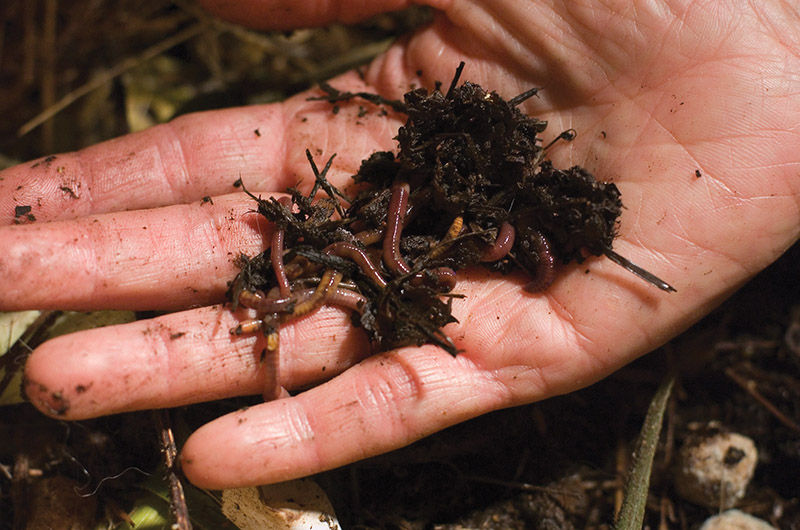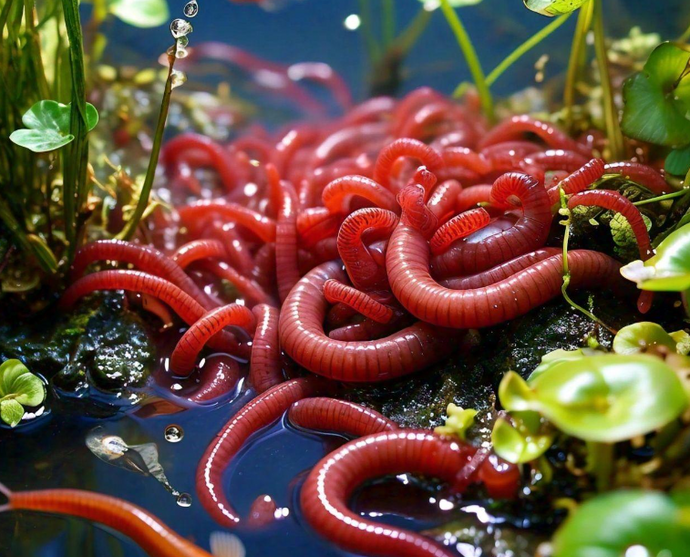Red worms: Help plants thrive
Wiki Article
Change Your Yard With Red Wigglers: Advice
Red wigglers are not just an inquisitiveness for garden compost lovers; they are critical agents of makeover for any type of garden. By developing a standard worm bin and recognizing the nutritional requirements of these amazing creatures, garden enthusiasts can significantly enhance dirt high quality and plant health. The procedure of transforming organic waste right into abundant, fertile castings is both uncomplicated and gratifying. However, real capacity of red wigglers surpasses plain composting. Checking out the nuances of their treatment and the diverse applications of their results can unlock also greater benefits for your horticulture ventures.
Advantages of Red Wigglers
Red wigglers, scientifically recognized as Eisenia fetida, are frequently hailed as nature's composting champs. These impressive worms serve a number of crucial advantages that can considerably improve garden wellness and productivity. They are reliable decomposers, damaging down organic material such as kitchen scraps and lawn waste right into nutrient-rich vermicompost (red worms). This all-natural plant food improves the soil, promoting healthy plant development and boosting dirt framework.
One more noteworthy advantage of red wigglers is their ability to reduce waste. By composting natural products that would certainly otherwise add to land fill waste, they play a crucial function in lasting gardening practices. Incorporating these worms into your horticulture routine can lead to boosted returns, much healthier plants, and a much more dynamic yard atmosphere, making them important allies for gardeners seeking to improve their environmental impact.
Establishing a Worm Container
Creating a worm container is an essential action for anybody wanting to harness the benefits of red wigglers in their horticulture initiatives. An appropriate worm container can be made from different products, consisting of plastic containers, wooden crates, or readily readily available worm bins. The first consideration is size; a bin that goes to the very least 2 feet broad, 3 feet long, and 1 foot deep is generally optimal for a tiny to medium variety of worms.Next, guarantee appropriate drainage and ventilation. Pierce openings in all-time low for excess dampness to get away and in the sides for airflow. It is essential to develop a bed linens layer, utilizing products such as shredded paper, cardboard, or coconut coir to offer a comfortable atmosphere for the worms. The bed linens ought to be damp but not soaked, appearing like a moist sponge.
Location the container in a location that keeps a consistent temperature, preferably in between 55 ° F and 77 ° F. Avoid direct sunshine or severe cool, as these conditions can harm the worms. As soon as the bin is established up, permit the bed linen to go for a couple of days before presenting the red wigglers, ensuring they have a growing atmosphere in which to thrive.
Feeding Your Red Wigglers
As soon as the worm bin is established and the red wigglers are presented, proper feeding ends up being essential to keeping a healthy and balanced worm populace. Red wigglers flourish on a diverse diet, primarily containing kitchen scraps and natural materials. Perfect foods consist of veggie peels, fruit scraps, coffee grounds, and smashed eggshells. It is critical to stay clear of feeding them meat, dairy products, or oily foods, as these can produce undesirable odors and bring in parasites.When introducing food, slice the scraps right into smaller sized pieces to promote quicker usage. Furthermore, hide the food underneath a layer of bed linens product to stop fruit flies and other nuisances. Display the feeding frequency; a general regulation is to give food every 1-2 weeks, relying on the number of worms and the quantity of food waste produced.

Harvesting Worm Castings
How can you tell when it's time to collect worm spreadings from your bin? The readiness of worm spreadings is indicated by a few essential indications. First, the product in the container ought to show up dark, crumbly, and rich in structure, appearing like a fine dirt. Additionally, the original food scraps need to be considerably broken down or virtually unrecognizable, indicating that the worms have efficiently processed them.Another indication is the reduction in worm task; as the castings build up, worms have a tendency to move in the direction of fresher food sources. If you see a decrease in worm movement and the existence of castings at the base of the bin, it's a clear signal that harvesting is due.
To harvest, carefully dig the castings, making sure to minimize disruption to the worms. A preferred method entails separating the spreadings utilizing light; worms tend to delve away from the light, permitting you to collect the spreadings extra quickly.
Harvesting routinely, approximately every three to 6 months, makes sure a regular supply of this nutrient-rich modification for your gardening endeavors. Bear in mind, the quality of your castings directly affects the wellness of your plants.
Utilizing Spreadings in Your Yard
(red wigglers for sale cheap)Utilizing worm spreadings in your yard can dramatically boost soil health and plant growth - red worms. These nutrient-rich natural plant foods supply important macro and trace elements, improving the general fertility of your dirt. By incorporating worm spreadings right into your garden beds, you can advertise useful microbial task, which assists in nutrient accessibility and enhances dirt structureTo utilize worm spreadings properly, blend them into the leading few inches of soil before planting. This makes sure that nutrients are easily accessible to your plants. You can develop a nutrient-dense fluid fertilizer by soaking worm spreadings in water for a week, after that applying the resulting "worm tea" straight to your plants. This method not just supplies instant nutrients however additionally encourages healthy and balanced root development.
Worm castings additionally boost moisture retention within the soil, reducing the requirement for frequent watering. Frequently integrating worm castings into your gardening regimen can lead to durable plant growth, enhanced yields, and a total much healthier yard ecosystem.
Final Thought
By establishing a worm bin, providing proper food, and consistently collecting nutrient-rich castings, garden enthusiasts can cultivate a sustainable ecosystem. The usage of worm castings and "worm tea" additionally contributes to moisture retention and nutrient Click This Link availability in the dirt.Report this wiki page